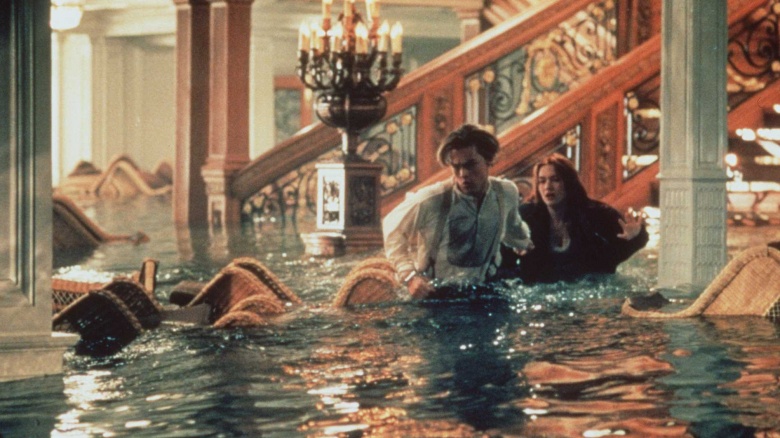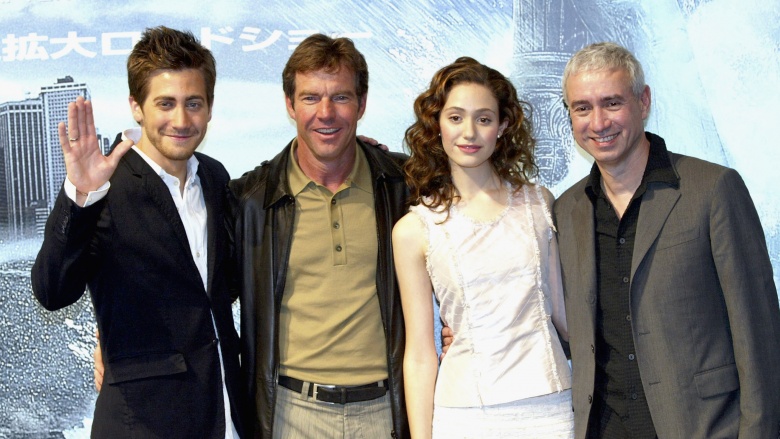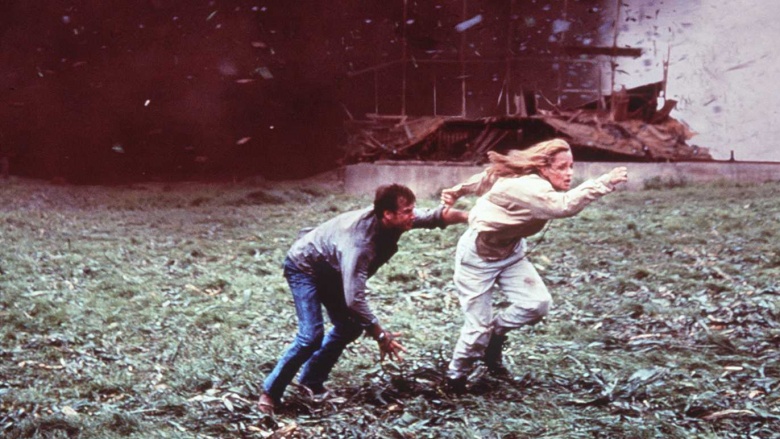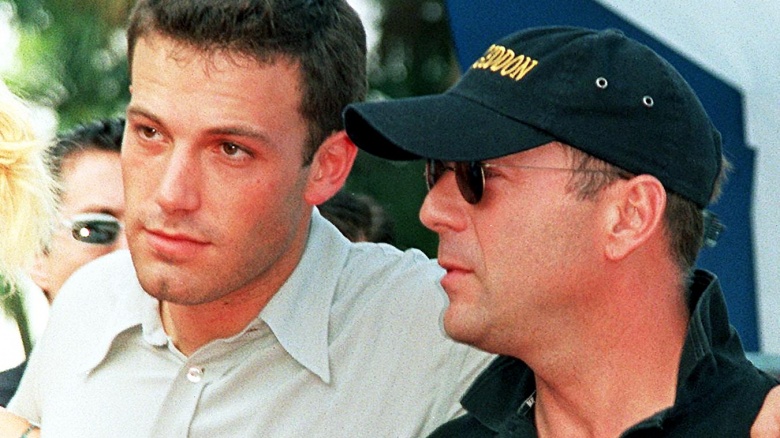When Science Ruined Your Favorite Movies
Science-fiction may be an exciting genre for movies, but they're mostly just that: fiction. In fact, over the years, many scientists have ripped apart the "science" in movies ranging from blockbuster disasters to Oscar-winning epics. Here are a few that totally would've flunked ninth-grade Earth Science class.
Gravity (2013)
Remember when Gravity came out in 2013 and everyone thought it was so scary and realistic? Well, if astrophysicist Neil de Grasse Tyson is to be believed, the space thriller starring Sandra Bullock and George Clooney is, scientifically speaking, crap. After the film hit theaters, Tyson posted a series of rants on Twitter, under the theme "Mysteries of #Gravity." The tweets began innocently enough; then, like the movie, things got ugly. "The film #Gravity should be renamed 'Zero Gravity,'" he tweeted first, to which everyone was like, "Huh?". Then, Tyson got technical. "Mysteries of #Gravity: When Clooney releases Bullock's tether, he drifts away. In zero-G a single tug brings them together." He even got nit-picky with the film's minor details, pointing out that Bullock's character's hair should have been floating in zero-gravity scenes. Insert mic-drop here. Incidentally, despite his takedown of Gravity, Tyson admitted he liked the movie "very much"; his opinions were simply based on his "perspectives of the world." But by then, the damage had already been done.
Titanic (1997)
You know you're legit when you have the brains to convince the director of the biggest Oscar winner in history to change his movie. That's what happened after Neil de Grasse Tyson sent an email to Titanic director James Cameron letting him know that one of the key scenes in the movie was scientifically incorrect. "[Tyson] sent me quite a snarky email saying that, at that time of year, in that position in the Atlantic in 1912, when Rose is lying on the piece of driftwood and staring up at the stars, that is not the star field she would have seen," Cameron told the U.K.'s Telegraph. So, what did Cameron do? He totally fixed it. "With my reputation as a perfectionist, I should have known that and I should have put the right star field in. So I said 'All right, send me the right stars for that exact time and I'll put it in the movie.'" Awesome. Now, if only Tyson could have fixed Titanic's script.
The Day After Tomorrow (2004)
The global-warming disaster thriller The Day After Tomorrow never really made sense to begin with. How could the Earth experience another ice age in a matter of days? That's basically what scientists ultimately concluded upon the film's 2004 release. The National Center for Atmospheric Research, for example, confirmed that temperates in New York City couldn't go from boiling to below freezing in the blink of an eye. "Temperatures in parts of the world could drop, but not nearly as rapidly or dramatically as portrayed in the movie," NCAR told NBC News. Meanwhile, a senior expert for the Worldwide Institute, an environmental research institute, told National Geographic News that it's "impossible" for climate to happen over the course of a few days. Even professors at major universities were all like, "yeah. no" to the movie's plot. "We are indeed experimenting with the Earth in a way that hasn't been done for millions of years. But you're not going to see another ice age—at least not like that," Harvard professor Dan Schrag told USA Today. Some ultimately applauded the film simply for addressing global warming. But in the end, most knew that it was just a Hollywood movie—and an inaccurate one at that. "[Climatologists] tried to tell [director Roland Emmerich] that an ice age wasn't going to come in three days," said then-Weather Channel president Debora Wilson. "But that doesn't make for a good movie."
Twister (1996)
From a special effects perspective, Twister was a pretty revolutionary movie; from a scientific perspective, however, it was totally inaccurate. Writing for the Washington Post in 2013, meteorologist and admitted Twister superfan Kathryn Prociv revealed a number of key facts about the movie that didn't quite add up. For one thing, she writes, the scene in which Bill Paxton's character declares a tornado is imminent because the sky is "going green" is technically misleading. The reason: "Storms that appear green are usually at least 50,000 feet high and green is the only wavelength filtered through the thick cloud," she writes. "Any storm that is 50,000 feet tall is likely capable of producing severe weather...but it does not guarantee a tornado as implied in the movie." Later, Prociv calls out the movie's characters for ranking twisters on the Fujita scale as they happen. That's because she says the ratings are not determined until "after the tornado has occurred and the National Weather Service performs a damage survey." She goes on to say that neither Paxton nor Helen Hunt's characters would ever be able to survive an F5 tornado by strapping themselves to a pipe with horse reins. But, yeah, even the dumbest person knew that was true.
Armageddon (1998)
Since Armageddon was released in 1998, the movie—about a group of astronauts trying to prevent an asteroid "the size of Texas" from hitting the Earth—has been subjected to numerous "How Armageddon Got It Wrong" articles. Arguably the best takedown came from the NASA Ames Research Center's Kevin Zahnle, who pointed out a number of key inaccuracies in the international science journal Nature (via Smithsonian.com). For starters, he writes, "only the three largest asteroids can be described as 'the size of Texas.'" From that point, he writes that an asteroid that big "would be as bright as the stars of Orion's belt" in the sky by the time the movie's characters discovered it. Even more damning, Zahnle claims the 800-foot drill hole that Bruce Willis' character has to create to blow up the asteroid would be way too small to work. In fact, Smithsonian.com quotes a study from students at the University of Leicester who determined that the bomb Willis ultimately has to detonate would have to be "at least a billion times stronger" than the one used in the movie. Wait a second—people actually took Armageddon seriously?
Lucy (2014)
The Scarlett Johansson thriller Lucy is predicated on a long-outdated myth that claim humans only use 10 percent of their brain. That myth has since been dispelled, as indicated in a pretty enlightening piece by Gizmodo. The article confirms that the human brain actually sucks up about 20 percent of our calorie intake. Oh, and pretty much every part of the brain stays active at all times. "Numerous types of brain imaging studies show that no area of the brain is completely silent or inactive," Gizmodo quotes from a study first reported by the New York Times. "Detailed probing of the brain has failed to identify the 'non-functioning' 90 percent." Even if we did only use 10 percent of our brains, that's still enough for humans to realize that Lucy sucked.






